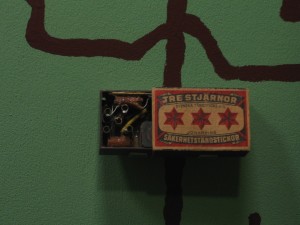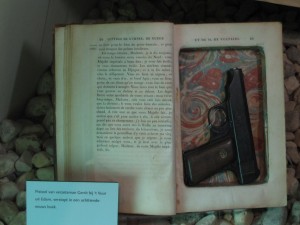Exploring Amsterdam: Day 2
Posted by Cassie, September 6th, 2009
We’ve been having lots of fun exploring Amsterdam the last couple days. We’ve been strolling down the canals and looking at all the neat houses along the canals. It was interesting to go to the Museum Willet-Holthuysen and see what the inside of one of the canal houses looks like. This canal house was incredibly ornate, made to show of the owner’s wealth. The house has an elaborate garden in a city where land is at such a premium because all of the land used to be underwater and had to be drained. Also, the ceilings in the house were so high, about 15-20 feet. The property in Amsterdam was taxed by the width, so the builders built as high as they wanted. Jacob Willet, the last owner of the house, has a funny life story. He studied many professions but never received a degree. His passion was collecting art, but he soon ran into financial troubles since he didn’t have a profession to provide income. So, he married a wealthy women so that he could continue collecting art and not have to get a job. His wife left the house to the city upon her death in 1895, requesting that it be opened to the public.

Garden at Museum Willet-Holthuysen

Grandfather clock at Museum Willet-Holthuysen
We also went on an evening canal cruise. We went right at sunset and returned after dark, so we went through the canals when they were beautifully lit up at night. Some of the canals are so narrow that the captain of the boat had to do careful maneuvering to get through. For tight turns, the captain had to back up the boat to make the turn, and a few of the canals only had inches of space to spare on either side. We also ran into a canal boat traffic jam! The captain turned to go down a canal, and there were two boats parked in the canal blocking it. So, the captain had to turn around and go down a different canal. 🙂
Resistance Musuem
The Netherlands was occupied by the Nazis during WWII, and Amsterdam has a really neat museum that shows how the Dutch resisted the Nazi occupation. The museum was really well done, and I especially liked how it included excerpts from journals and letters from the people who lived through the occupation to give a personal feel for what it was like. When the Nazis invaded, they dismissed all the Jewish professors from the universities. The students set up huge protests of the dismissal of their professors. In response, the Nazis required the students to sign a loyalty pledge saying that they would not resist the occupation. If students did not sign, they were forced to leave the university and deported to forced labor camps. An amazing 86% of students refused to sign the pledge, and many had to go into hiding. The Nazis also forced the Dutch to turn in their radios so that they could not get news from the outside world. In response, the Dutch made their own radios, and the coolest example was a tiny radio that fit in a matchbox. The Dutch also had printing presses for underground, illegal newspapers and for forging documents required by the Nazi. They would also remove the J on identity cards marking people as Jews.

Matchbox radio

Gun hidden in book